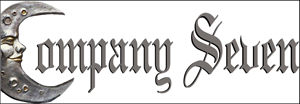
"Parfocalizing an Ocular to a CCD Camera"
January 1996
One of the difficulties faced by those who are new to CCD imaging is how to find, center and focus an object to be imaged. This is more difficult when trying to image an object such as faint nebulae which may be invisible to the eye, even with the aid of a telescope.
Here we will discuss one helpful technique which employs a "parfocal" eyepiece (or ocular) with the CCD camera. One will be able to insert an eyepiece into the focuser of a telescope, find and center the area or object to be imaged, and then bring it nearly to exact focus. Then the eyepiece is removed and replaced by the CCD detector. We do sell parfocalized eyepieces matched to particular SBIG CCD cameras however, some people prefer to employ one of their existing eyepieces for this purpose.
Limitations: This technique works best when employing an conventional eyepiece (with a field stop near the open end of the eyepiece barrel) and with a diameter similar to that of the CCD head nose piece, or with a series of adapters to simulate back focus taken by the CCD with other types of camera adapters. This ocular will be compatible with your CCD camera on any telescope; if you should change to another CCD system in the future then this procedure can be repeated with the eyepiece to adapt it for use with another ocular. This concept can work with a CCD camera head with a color filter wheel or other such device provided appropriate extensions can be provided or fabricated. CCD cameras with photographic camera lens adapters will require more complicated adaptations of the described principle.
- Assemble the telescope indoors or at any convenient site located near a desktop or portable computer. The telescope need
not be polar aligned or tracking. The CCD camera must be capable of reaching the visual port of the the telescope.
- With the telescope finder and an eyepiece center a target in the distance. Ideally the target would have very contrasting
features, such as black bars against a light background. It will not matter if the target is viewed through a closed window.
- Perfectly focus at this point is not critical. Lock the telescope in place so that it will not shift position.
- Remove the eyepiece, then insert the CCD camera detector (head) in place of the eyepiece.
- Initiate the CCD camera control program, and enter the "Focus" mode. In such a mode, the camera will capture an image and
download it to the computer screen every several seconds or so.
- Adjust the telescope focus methodically back and forth slowly all the while observing the computer screen and the
indicated
photometric readings (peak brightness value) for signs of improving focus.
- Once the best focus is indicated, lock the telescope focuser if possible. Otherwise, simply remove the CCD camera head
carefully.
- In place of the CCD camera insert an eyepiece. Without making any adjustments to the telescope, draw the eyepiece in or
out
until the image appears sharp and clear in that eyepiece. It is possible that one may have to draw the eyepiece out so far
that an optional eyepiece extension tube (threaded into the eyepiece barrel) will be necessary.
If the eyepiece can not be moved in closer to the telescope, then consider either adding a short extension to the nose piece of the CCD, or attempt to do this with another eyepiece.
- Once the eyepiece is drawn to bring the target to focus then lock it in place. One may choose a number of methods to
indicate its proper position in the focuser:
- score the eyepiece barrel with a file
- apply tape around the barrel
- secure a metal collar in place (such as the FR-2 by Santa Barbara Instruments Group)
- score the eyepiece barrel with a file
Contents Copyright 1994-2000 Company Seven - All Rights Reserved

